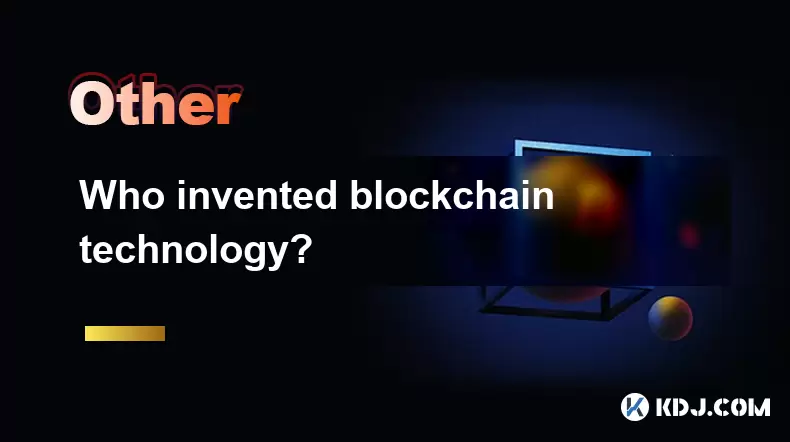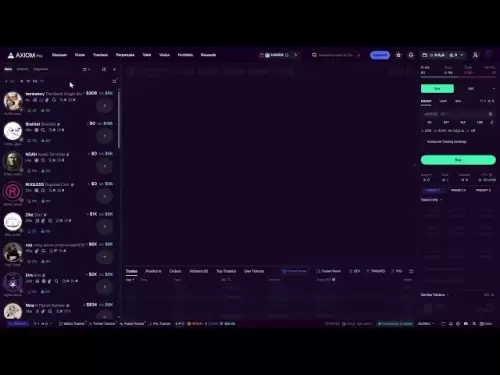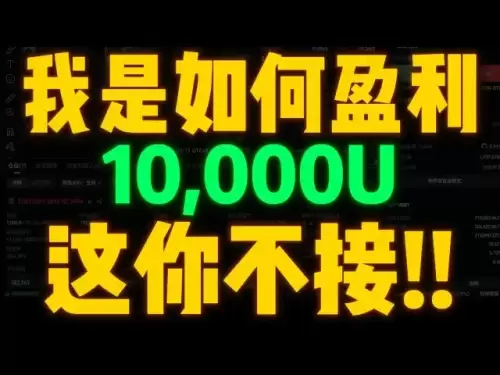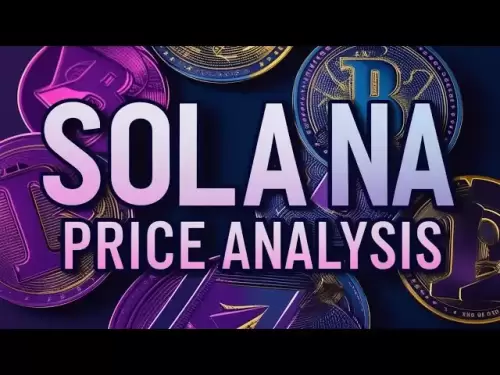-
 Bitcoin
Bitcoin $118300
-0.58% -
 Ethereum
Ethereum $3825
0.11% -
 XRP
XRP $3.137
-0.71% -
 Tether USDt
Tether USDt $0.9999
-0.01% -
 BNB
BNB $803.9
-3.37% -
 Solana
Solana $181.5
-1.94% -
 USDC
USDC $0.9999
0.01% -
 Dogecoin
Dogecoin $0.2238
-2.51% -
 TRON
TRON $0.3358
2.12% -
 Cardano
Cardano $0.7844
-2.16% -
 Hyperliquid
Hyperliquid $43.31
-1.48% -
 Sui
Sui $3.807
-4.04% -
 Stellar
Stellar $0.4203
-1.96% -
 Chainlink
Chainlink $17.79
-3.00% -
 Bitcoin Cash
Bitcoin Cash $567.8
-1.34% -
 Hedera
Hedera $0.2614
-4.30% -
 Avalanche
Avalanche $24.19
-4.46% -
 Litecoin
Litecoin $109.2
-0.74% -
 UNUS SED LEO
UNUS SED LEO $8.969
-0.01% -
 Toncoin
Toncoin $3.404
3.97% -
 Ethena USDe
Ethena USDe $1.001
-0.01% -
 Shiba Inu
Shiba Inu $0.00001307
-3.19% -
 Uniswap
Uniswap $10.33
-1.23% -
 Polkadot
Polkadot $3.884
-4.06% -
 Monero
Monero $312.9
-1.87% -
 Dai
Dai $1.000
0.01% -
 Bitget Token
Bitget Token $4.537
-2.24% -
 Pepe
Pepe $0.00001156
-3.40% -
 Cronos
Cronos $0.1437
-0.89% -
 Aave
Aave $282.8
-2.77%
How to participate in IDO? A must-read for beginners: the entire process of new issuance
Participating in an IDO involves choosing a DEX, funding your wallet, researching the project, and navigating the IDO process, with post-IDO considerations crucial for managing your tokens effectively.
May 30, 2025 at 11:49 pm

Participating in an Initial DEX Offering (IDO) can be an exciting opportunity for cryptocurrency enthusiasts to get involved in the early stages of promising projects. An IDO allows investors to purchase tokens directly on a decentralized exchange (DEX), typically before the tokens are listed on other platforms. For beginners, understanding the entire process of new issuance is crucial to navigate this space effectively. This article will guide you through the essential steps and considerations when participating in an IDO.
Understanding IDOs and Their Importance
IDOs represent a new method for projects to raise funds and distribute tokens directly to the community. Unlike Initial Coin Offerings (ICOs), which often involve centralized platforms, IDOs leverage the infrastructure of decentralized exchanges. This approach offers several benefits, including increased transparency, reduced risk of fraud, and immediate liquidity for the newly issued tokens.
To participate in an IDO, you'll need to understand the specific requirements and processes of the DEX hosting the event. Platforms like Uniswap, SushiSwap, and PancakeSwap are popular choices for IDOs. Each platform may have its own set of rules and procedures, so it's important to familiarize yourself with these before proceeding.
Preparing for an IDO
Before you can participate in an IDO, you'll need to take several preparatory steps. The first step is to choose a DEX that is hosting the IDO you're interested in. Once you've selected a platform, you'll need to set up a wallet that is compatible with that DEX. Popular options include MetaMask for Ethereum-based DEXs and Trust Wallet for BSC-based DEXs.
Next, fund your wallet with the necessary cryptocurrency to participate in the IDO. Most IDOs require you to use the native token of the DEX, such as ETH for Uniswap or BNB for PancakeSwap. Ensure you have enough funds to cover the cost of the tokens you wish to purchase, as well as any transaction fees.
Finally, research the project you're interested in. Look into the project's whitepaper, team, roadmap, and any other relevant information. Participating in an IDO involves risk, so it's crucial to make informed decisions based on thorough research.
Participating in an IDO
Once you're prepared, you can move on to the actual process of participating in an IDO. Here's a step-by-step guide to help you through it:
- Connect your wallet: Visit the DEX's website and connect your wallet to the platform. This usually involves clicking a "Connect Wallet" button and selecting your wallet from the list of options.
- Navigate to the IDO section: Find the section of the DEX dedicated to IDOs. This may be labeled as "Launchpad," "IDO," or something similar.
- Select the IDO: Choose the IDO you want to participate in from the list of available offerings. Make sure you're selecting the correct project and that you understand the terms of the IDO.
- Enter the amount: Decide how many tokens you want to purchase and enter the amount in the provided field. Be aware of any minimum or maximum purchase limits.
- Confirm the transaction: Review the details of your transaction, including the amount of tokens you're purchasing and any associated fees. Once you're satisfied, confirm the transaction through your wallet.
- Wait for the IDO to conclude: After submitting your transaction, you'll need to wait for the IDO to conclude. This can take anywhere from a few minutes to several hours, depending on the specifics of the offering.
Post-IDO Considerations
After the IDO has concluded, there are a few important steps to take. First, check your wallet to ensure that you've received the tokens you purchased. If you don't see the tokens immediately, don't panic; it may take some time for the tokens to be distributed.
Next, consider your strategy for the tokens you've acquired. You may choose to hold onto them in anticipation of future growth, or you might decide to sell them for a profit. Keep in mind that the value of new tokens can be highly volatile, so it's important to have a clear plan.
Finally, stay informed about the project you've invested in. Follow their social media channels, join their community forums, and keep up with any news or updates. Staying engaged can help you make better decisions about your investment.
Common Pitfalls and How to Avoid Them
Participating in an IDO can be a rewarding experience, but it's not without its challenges. Here are some common pitfalls to watch out for and tips on how to avoid them:
- Scams and fraudulent projects: Always conduct thorough research before participating in an IDO. Look for red flags such as anonymous teams, unrealistic promises, and lack of a clear roadmap. Use reputable sources and community feedback to validate the project's legitimacy.
- Technical issues: Technical problems can arise during an IDO, such as wallet connectivity issues or high network congestion. To mitigate these risks, ensure your wallet and DEX are up to date, and consider participating in the IDO during off-peak hours when network traffic is lower.
- Overpaying for tokens: Be aware of the token price and any associated fees. Some IDOs may have hidden costs or high gas fees that can significantly impact your investment. Always review the full cost before confirming your transaction.
Managing Your IDO Tokens
Once you've successfully participated in an IDO, managing your newly acquired tokens is an important step. Here are some strategies to consider:
- Staking and yield farming: Many projects offer staking or yield farming opportunities for their tokens. These can provide additional rewards and help you grow your investment over time. Research the available options and consider participating if it aligns with your investment goals.
- Diversification: Don't put all your eggs in one basket. Consider diversifying your portfolio by investing in multiple projects or asset classes. This can help mitigate risk and protect your investment.
- Long-term vs. short-term: Decide whether you're in it for the long haul or looking for short-term gains. Your strategy will depend on your investment goals and risk tolerance. Long-term investors may choose to hold onto their tokens, while short-term traders might look to sell for a quick profit.
Frequently Asked Questions
Q: Can I participate in an IDO with any cryptocurrency?
A: Most IDOs require you to use the native token of the DEX hosting the event, such as ETH for Uniswap or BNB for PancakeSwap. Some projects may accept other cryptocurrencies, but this is less common. Always check the specific requirements of the IDO you're interested in.
Q: What happens if an IDO is oversubscribed?
A: If an IDO is oversubscribed, it means that more people want to participate than there are tokens available. In this case, the DEX may use a lottery system or a first-come, first-served approach to allocate tokens. It's important to act quickly and be prepared for the possibility that you may not receive the full amount of tokens you requested.
Q: Are there any legal considerations when participating in an IDO?
A: The legal status of IDOs can vary depending on your jurisdiction. Some countries have specific regulations governing cryptocurrency investments, and participating in an IDO may be subject to these laws. It's important to research the legal requirements in your area and consult with a legal professional if you have any concerns.
Q: How can I stay updated on upcoming IDOs?
A: To stay informed about upcoming IDOs, you can follow cryptocurrency news websites, join relevant social media groups and forums, and subscribe to newsletters from DEXs and project teams. Many platforms also have dedicated sections for announcing upcoming IDOs, so be sure to check these regularly.
Disclaimer:info@kdj.com
The information provided is not trading advice. kdj.com does not assume any responsibility for any investments made based on the information provided in this article. Cryptocurrencies are highly volatile and it is highly recommended that you invest with caution after thorough research!
If you believe that the content used on this website infringes your copyright, please contact us immediately (info@kdj.com) and we will delete it promptly.
- Dalio's Take: Balancing Bitcoin, Gold, and the Debt Doom Loop
- 2025-07-31 00:51:15
- PENGU Price Plunge? Binance Transfers and Token Transfer Trends
- 2025-07-30 23:10:15
- Navigating Crypto Investment: Bitcoin Mining and the Rise of Cloud Mining in the Big Apple
- 2025-07-30 22:31:15
- Meme Coins, Profit, and Investment: Riding the Crypto Wave in Style
- 2025-07-30 23:10:15
- LivLive's Gamified AR Launch Phase: Level Up Your Reality!
- 2025-07-30 22:31:15
- Bitcoin, Crypto, and the Golden Age: Navigating the Future of Digital Assets
- 2025-07-31 00:10:14
Related knowledge

How to start a business using blockchain?
Jul 28,2025 at 12:36am
Understanding the Basics of Blockchain TechnologyBefore diving into the process of starting a business using blockchain, it's crucial to understand wh...

What is a token on the blockchain?
Jul 21,2025 at 07:00am
Understanding the Concept of a TokenIn the realm of blockchain technology, a token is a digital representation of an asset or utility that exists on a...

Can blockchain be used for identity verification?
Jul 18,2025 at 02:14pm
Understanding Identity Verification in the Digital AgeIn the modern digital landscape, identity verification has become a critical component for ensur...

What is a consensus mechanism in blockchain?
Jul 21,2025 at 03:01am
Understanding the Basics of Consensus MechanismsA consensus mechanism is a critical component of any blockchain network. It refers to the process by w...

How to explain blockchain to someone with no tech background?
Jul 18,2025 at 11:08pm
Understanding the Basics of BlockchainTo explain blockchain to someone with no tech background, it's essential to start with simple analogies and avoi...

Who invented blockchain technology?
Jul 23,2025 at 01:28am
Origins of Blockchain TechnologyBlockchain technology did not emerge from a single inventor or institution. Instead, it evolved through a series of ac...

How to start a business using blockchain?
Jul 28,2025 at 12:36am
Understanding the Basics of Blockchain TechnologyBefore diving into the process of starting a business using blockchain, it's crucial to understand wh...

What is a token on the blockchain?
Jul 21,2025 at 07:00am
Understanding the Concept of a TokenIn the realm of blockchain technology, a token is a digital representation of an asset or utility that exists on a...

Can blockchain be used for identity verification?
Jul 18,2025 at 02:14pm
Understanding Identity Verification in the Digital AgeIn the modern digital landscape, identity verification has become a critical component for ensur...

What is a consensus mechanism in blockchain?
Jul 21,2025 at 03:01am
Understanding the Basics of Consensus MechanismsA consensus mechanism is a critical component of any blockchain network. It refers to the process by w...

How to explain blockchain to someone with no tech background?
Jul 18,2025 at 11:08pm
Understanding the Basics of BlockchainTo explain blockchain to someone with no tech background, it's essential to start with simple analogies and avoi...

Who invented blockchain technology?
Jul 23,2025 at 01:28am
Origins of Blockchain TechnologyBlockchain technology did not emerge from a single inventor or institution. Instead, it evolved through a series of ac...
See all articles

























































































